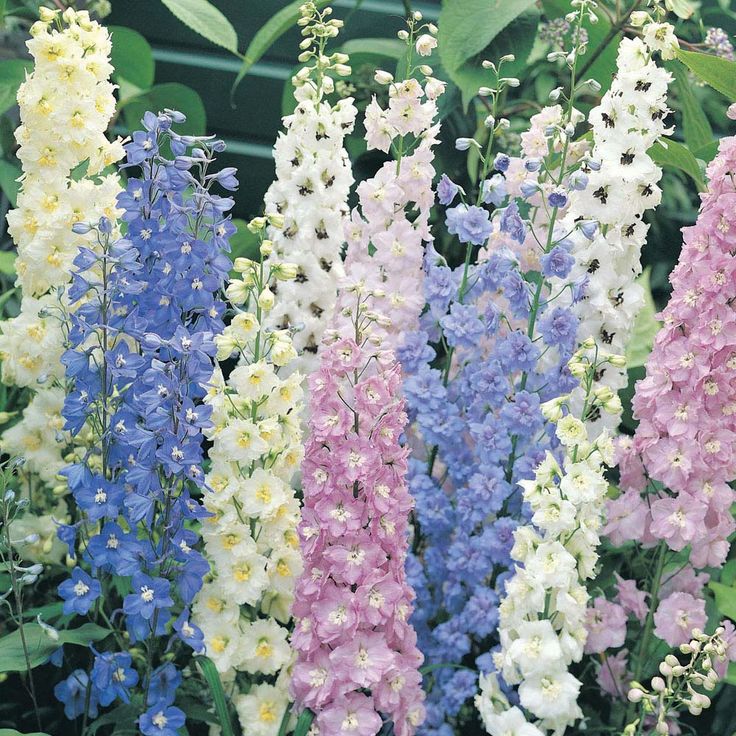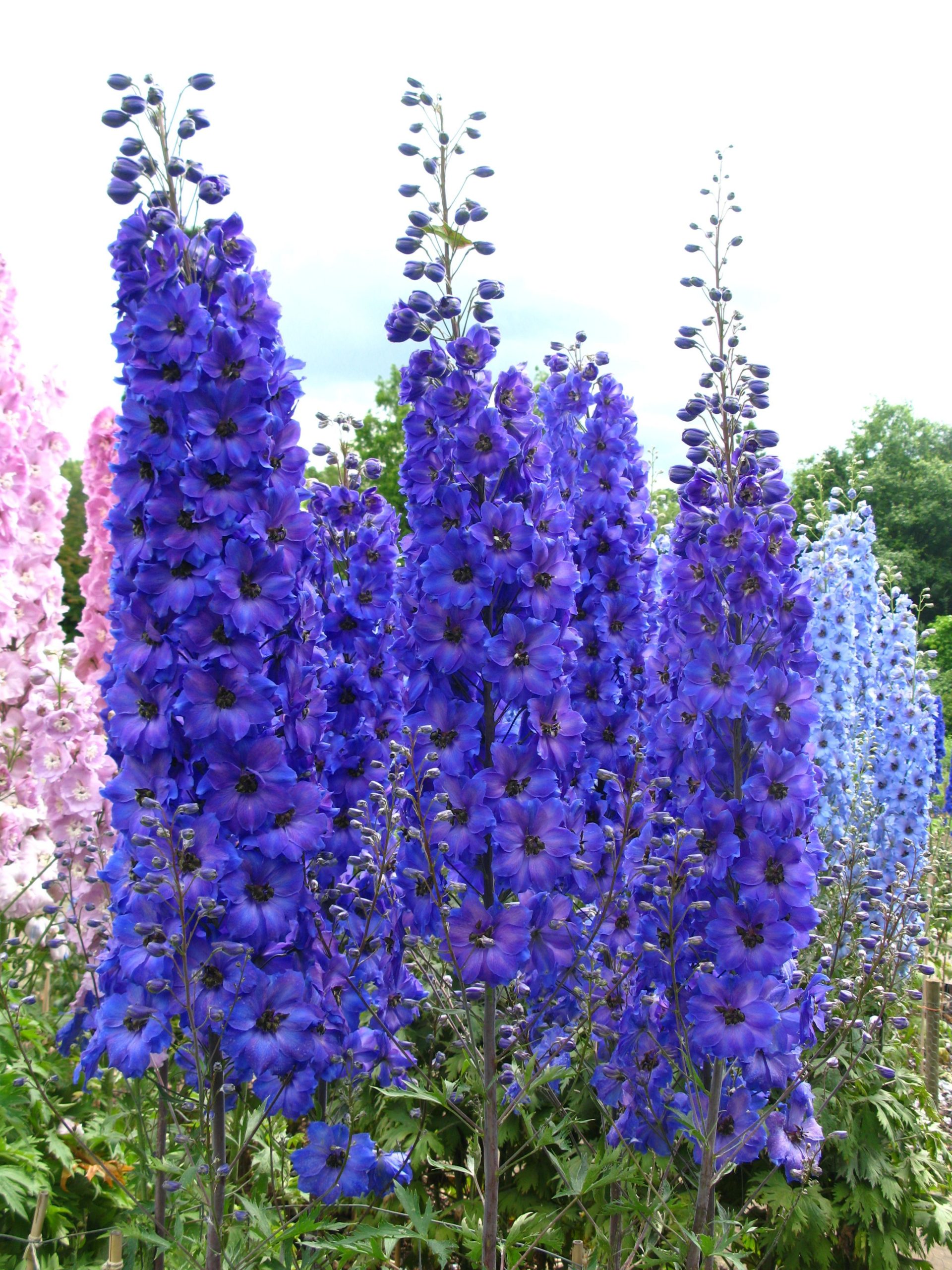
Growing Delphiniums
Delphiniums are the true royalty of cottage garden perennials. With their regal, statuesque tall towers of flowers, they can create an unrivalled floral extravaganza of pure brilliance and beauty. And you can never have enough of them.
But with great regret, deep embarrassment and with a quiet sense of shame, I have not a single mature specimen in my own garden. They have all perished, over and over, year after year. It all starts out so well. Yet, take your attention off them, at any time, no matter how briefly, they mournfully cry,
“Hey bro, you don’t love and care for me enough, I’m giving up, I’m out of here, see you later, maybe try again next year”.
All that remains is a totally demoralising graveyard, littered with sad delphinium deaths marked with their stakes as gravestones. But that’s all about to change, big time.
Yep, delphiniums are hard work. They are not for the faint hearted or the casual gardener. They silently scream out, and you better somehow hear their call, demanding boundless doses of attention and care, especially in their first year whilst becoming established. Their foes to success are many, poor soil, bad positioning decisions, snails, slugs and caterpillars, lack of water and exposure to harsh, tough summer sun.
But this year, piqued with an infectious fresh sense of enthusiasm, I am determined to win the great delphinium challenge. Failure will not be in my vocabulary. I’m dreaming big, doing big and achieving big.
To minimise any mishaps, I am creating a dedicated only delphinium garden bed to concentrate all my efforts to their successful cultivation. lt is an area about 2m x 3m, planted out with 24 seedlings from 4 punnets. It has adequate room still available for the future addition of the odd small single pot and if further space becomes available due to the regrettable odd fatality. My past experiences have taught me to be realistic.

History
The name Delphinium is derived from the Greek word for dolphin, because the shape of the unopened flowers bears a resemblance to that of a dolphin.
They originate from the Alps of northern Europe, Iberia and the mountains of China. Thus, we must keep this in mind when cultivating them in our own gardens.
Present cultivars first emerged around the 1850s through to the 1930s, with the best of current cultivars being ‘Pacific Giants’.
Description
Delphiniums possess large, serrated fern like leaves. Their flower stems are up to 90cm or more in height, bearing single, semi-double and double flowers with shades of blue, violet, mauve, pink and white with contrasting eyes or centres. Mature specimens may reach 60cm in diameter.
Cultivation
As mentioned before, delphiniums originate and thrive in climates where it is cool and wet. Thus, we must attempt to replicate these conditions as close as possible.
Firstly, you must be strategic in their correct positioning, that is, an area which receives morning sun and dappled to no direct afternoon summer sun, say on the eastern side of a garden or under the umbrella of large deciduous trees. If you are in a hot climate allow minimal light throughout the full entirety of the summer day.
Secondly, it is all so very important in prepping the soil, and don’t be a miser in this. They enjoy a humus rich well-drained soil. Dress the soil very generously with great quality compost. Next apply a good heavy carpet of Seamungus which is pelletised seaweed and fish, to improve the condition of the soil and to enhance root development and thus future general plant health and strength. Follow this by another dressing of a quality pelletised chicken fertiliser, my choice is Rooster Booster. Deeply dig in and combine the three. Repeat the applications monthly around the plants.
Thirdly, delphiniums are forever thirsty plants. Please be very diligent in watering them lavishly, that is deeply and often, especially in the hotter months.
Fourthly, remember we are thinking and doing big, so signpost each seedling with a 2m stake for future support for the tall, yet thin and fragile flowering stems.
Lastly, surround the delphiniums, with a good thick carpet covering of sugar cane mulch in order to conserve moisture, keep the roots cool and inhibit weed growth.
Oh, and so very vital, apply snail pellets or a homemade deterrent weekly, and never, ever forget this chore. Even though the juice or sap of the plant is deadly poisonous to us, snails and slugs are strangely immune to their toxins and treat them as a true delicacy, their own delicious equivalent to caviar. They will slide a mile to feast and completely devour a delphinium in one single night. See my blog on snail prevention.

Propagation
For delphiniums they are best achieved by root division, but that is if you are lucky enough to possess a healthy established plant. So, for me I purchase them in punnets or in small pots, planting them in autumn, or early spring. Planted in winter, they just seem to sulk, remain still and miserable, yet if they are available, grab them when you can and keep them in pots until the arrival of warmer weather. You may also have some success raising them from seed in autumn or early spring.
Postscript
Late yesterday, to my utter delight I discovered in my back garden, three very lonely and completely forgotten one-year old delphiniums. Planted last winter, miraculously and against all odds, they have survived the hot dry summer, kept alive under the protective canopy of self-seeded nasturtium leaves. Each of these three survivors are all small and stunted but still very much in existence. My previous efforts had indeed resulted in an achievement, however minor. I was not a total failure.
The easy lesson here is to never give up, try and try again, success must arrive sometime. With renewed hope and enthusiasm my grand new delphinium project will indeed become a reality. Yes, this year I will win the great delphinium challenge. I can grow three, so why not thirty. Wish me luck.
Have fun and happy gardening.
Ned McDowell